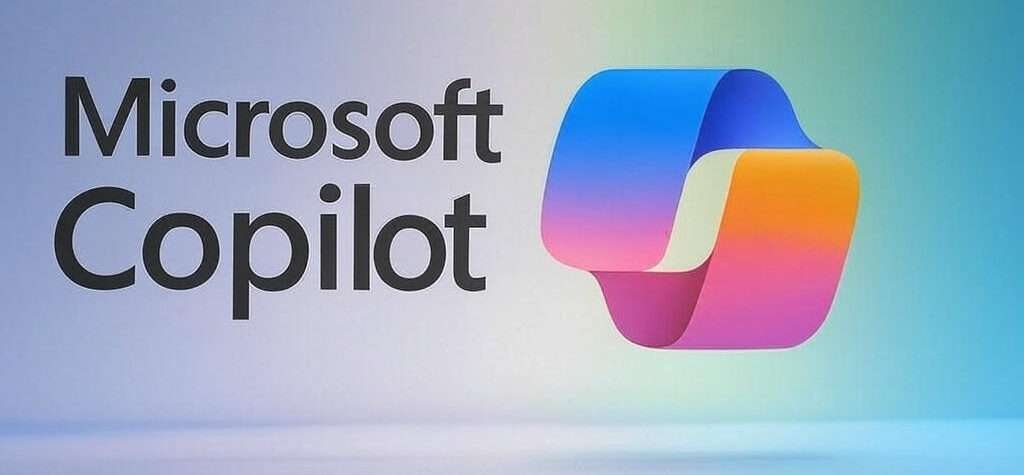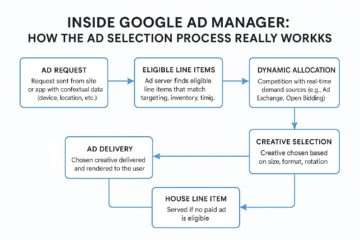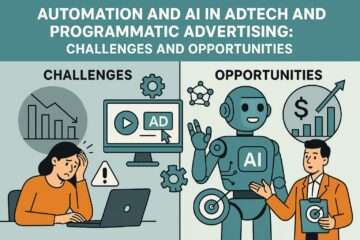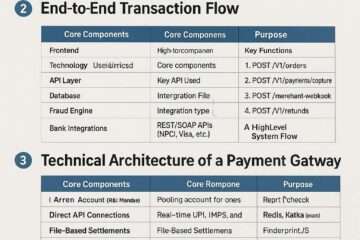

Introduction
In 2021, Microsoft acquired Xandr, a leading demand-side platform (DSP) from AT&T for approximately $1 billion, aiming to bolster its digital advertising and retail media solutions. Xandr, formerly AppNexus, was renowned for its transparency and sophisticated programmatic advertising capabilities. However, in a surprising move announced on May 14, 2025, Microsoft revealed plans to shutter Xandr Invest DSP by February 28, 2026, replacing it with a chatbot-style ad-buying product powered by its generative AI platform, Copilot. This strategic pivot underscores Microsoft’s shift toward AI-driven, conversational advertising experiences, raising questions about its impact on the DSP market, publisher economics, and the future of programmatic advertising.
Background: Microsoft’s Acquisition of Xandr
Microsoft’s acquisition of Xandr, completed in June 2022, was initially seen as a strategic move to strengthen its position in the programmatic advertising ecosystem. Xandr’s Invest DSP provided advertisers with a transparent platform for automated, data-driven ad buying across websites and apps, while its Monetize SSP empowered publishers to maximize inventory value. The acquisition aligned with Microsoft’s vision to create a privacy-respecting, first-party data-driven ad marketplace, leveraging its assets like Bing, Xbox, LinkedIn, and Windows. Xandr’s technology was also integrated with platforms like Netflix’s ad-supported tier, highlighting its significance in connected TV (CTV) advertising.
However, Microsoft’s priorities shifted post-acquisition. The company began deprioritizing third-party ad tech, as evidenced by the quiet shutdown of PromoteIQ, its retail media ad tech business, in 2024, and a focus on sell-side solutions like Microsoft Monetize and Curate. The decision to sunset Xandr Invest DSP reflects Microsoft’s broader AI-centric strategy, which emphasizes conversational and personalized advertising over traditional programmatic models.
The Shutdown of Xandr Invest DSP
Microsoft’s announcement to close Xandr Invest DSP by March 2026 marks a significant departure from its earlier ad tech ambitions. The company cited the misalignment of the current DSP model with its vision for a “conversational, personalized, and agentic” advertising future. Kya Sainsbury-Carter, head of Microsoft Advertising, emphasized that the traditional DSP model cannot support the privacy-focused, AI-driven experiences Microsoft envisions. Instead, Microsoft is consolidating its ad tech efforts into a single AI-powered buying platform, the Microsoft Advertising Platform, with Copilot at its core.
The closure will result in layoffs within Microsoft’s ad tech division, though exact numbers remain undisclosed. Microsoft has committed to a smooth transition, ensuring platform stability and support for clients until the shutdown. The company will continue to support access to its inventory and partner inventory through third-party DSPs that align with its focus on privacy, quality, and transparency.
Introducing the Chatbot-Style Ad-Buying Product Powered by Copilot
Microsoft’s replacement for Xandr Invest DSP is a chatbot-style ad-buying product powered by Copilot, its generative AI platform built on the GPT-4 series of large language models. This new platform aims to simplify and personalize the ad-buying process, integrating seamlessly with Microsoft’s first-party assets. Below are the key features of the Copilot-powered ad-buying platform:
Key Features
- Conversational Ad Buying:
- Advertisers can interact with the platform via natural language prompts, similar to chatting with a virtual assistant. For example, an advertiser might input, “Create a video ad campaign targeting tech enthusiasts on Xbox with a $10,000 budget,” and Copilot will generate a tailored campaign plan.
- The platform uses Microsoft’s Prometheus model, fine-tuned for advertising tasks, to understand and respond to complex queries, streamlining campaign setup and optimization.
- Automated Creative Generation:
- Copilot enables advertisers to create ad assets (text, images, videos, and banners) directly within the platform. For instance, it can generate personalized ad copy or visuals based on brand guidelines and audience data.
- The “ad voice” feature ensures ads feel natural and integrated into conversational experiences, such as search results or in-app interactions.
- First-Party Data Integration:
- The platform leverages Microsoft’s exclusive datasets, including Bing search activity, LinkedIn professional profiles, and Edge browser data, to target high-value audiences with precision.
- It supports advertiser first-party data activation, allowing brands to upload their own data for customized targeting while adhering to privacy standards.
- Privacy-Centric Targeting:
- The platform prioritizes privacy-safe solutions, supporting industry-standard identity solutions and Microsoft’s own identity suite to navigate the post-cookie landscape.
- Ads are delivered in a way that respects consumer privacy preferences, aligning with Microsoft’s commitment to ethical advertising.
- Curated Programmatic Deals:
- Through Microsoft Curate, advertisers can access curated deal libraries, including premium inventory from external SSPs, ensuring high-quality placements.
- The platform offers 100% DSP-to-SSP match rates, bid shading, and no discrepancy fees, enhancing cost efficiency.
- Cross-Platform Reach:
- Advertisers can engage audiences across Microsoft’s ecosystem, including Xbox, Bing, MSN, Outlook, Edge, Windows, LinkedIn, and the Microsoft publisher network, reaching over 1 billion users.
- The platform supports multiple ad formats, including display, video, native, and CTV, with a focus on omnichannel delivery.
Technical Capabilities
- Enterprise APIs: Open and well-documented APIs allow advertisers to build proprietary solutions on top of the platform, using robust log-level data for custom bidding algorithms.
- Data Science Toolkit: Advertisers can develop custom optimization models, complementing Copilot’s built-in algorithms.
- Real-Time Insights: The platform provides detailed analytics and insights, enabling advertisers to monitor campaign performance and adjust strategies dynamically.
Impact on the DSP Market
Microsoft’s decision to replace Xandr Invest DSP with an AI-powered platform has significant implications for the DSP market, which has been dominated by players like The Trade Desk, Google DV360, and MediaMath. Below are the key impacts:
1. Market Consolidation
- The closure of Xandr Invest DSP, a pioneer in programmatic advertising, signals further consolidation in the ad tech industry. With iconic platforms like AppNexus and MediaMath disappearing, smaller DSPs may struggle to compete, leading to a market dominated by fewer, larger players.
- Luca Filardo, SVP of commercial growth at Adlook, noted that the programmatic advertising landscape is undergoing a “dramatic shift,” with challengers poised to gain market share as traditional leaders exit.
2. Shift Toward AI-Driven Solutions
- Microsoft’s move underscores the growing importance of AI in advertising. By replacing a traditional DSP with a conversational AI platform, Microsoft is betting on a future where automation and personalization drive ad buying.
- Other DSPs may feel pressure to integrate similar AI capabilities, such as natural language interfaces or automated creative generation, to remain competitive.
3. Potential for Reduced Transparency
- Xandr was known for its granular fee visibility, a feature that set it apart in an often opaque industry. The shift to a Copilot-powered platform, which emphasizes outcomes over supply chain transparency, may leave advertisers with less visibility into costs.
- Florian Schadauer from The Trade Desk highlighted that Xe’s reputation for transparency could prompt other DSPs to enhance their fee disclosure offerings to capture migrating advertisers.
4. Competition from Walled Gardens
- Microsoft’s focus on first-party assets aligns with the strategies of walled gardens like Meta, Google, and Amazon, which prioritize their own ecosystems. This could intensify competition between open-web DSPs and walled gardens, with the latter gaining an edge due to their integrated data and inventory.
Impact on Publisher CPMs
The reduction in the number of DSPs, coupled with Microsoft’s shift to an AI-driven platform, raises concerns about its effect on publisher cost-per-mille (CPM) rates. Here’s an analysis:
Potential for Lower CPMs
- Reduced DSP Competition: With Xandr Invest DSP exiting the market, there will be fewer platforms bidding for publisher inventory, potentially reducing competition and driving down CPMs. Xandr’s transparent platform was a significant demand source, and its absence could weaken publishers’ negotiating power.
- Shift to Outcome-Based Buying: Microsoft’s Copilot platform focuses on measuring overall effectiveness rather than granular bidding, which may prioritize high-performing inventory. Publishers with less premium or less targeted inventory could see lower CPMs as demand shifts to curated, high-value placements.
- Consolidation of Demand: Microsoft’s collaboration with third-party DSPs and its partnership with Criteo for retail media may consolidate demand through fewer channels, limiting the number of bidders for publisher inventory and potentially suppressing CPMs.
Counterarguments
- Premium Inventory Focus: Microsoft’s Curate platform and partnerships with premium SSPs could drive demand for high-quality inventory, potentially increasing CPMs for top-tier publishers.
- AI-Driven Efficiency: Copilot’s ability to optimize campaigns in real-time may improve ad performance, allowing publishers to command higher CPMs for inventory that delivers strong outcomes.
- Market Adjustments: Other DSPs, such as The Trade Desk or Magnite, may step in to fill the gap left by Xandr, maintaining competitive pressure and supporting CPMs.
Overall, while there is a risk of lower CPMs for some publishers, particularly those with non-premium inventory, the impact will vary based on inventory quality and the ability of other DSPs to absorb Xandr’s demand.
Future Outlook
Microsoft’s pivot to an AI-powered advertising platform sets the stage for several trends in the ad tech industry:
- Conversational Advertising Dominance:
- The success of Microsoft’s Copilot platform could redefine ad buying, making conversational interfaces the norm. Advertisers may increasingly rely on AI agents to handle complex campaign tasks, from planning to optimization.
- Microsoft’s projected $17 billion in ad revenue for 2025 positions it as a formidable player, potentially challenging Google and Meta in the AI-driven ad space.
- Increased AI Integration:
- The ad tech industry will likely see accelerated AI adoption, with DSPs and SSPs investing in generative AI and machine learning to enhance targeting, creative generation, and campaign management.
- Microsoft’s partnership with Criteo and focus on retail media suggest that AI-driven retail advertising will be a key growth area, with personalized, shoppable ads gaining traction.
- Privacy and Transparency Challenges:
- As AI platforms prioritize outcomes over transparency, advertisers may demand new standards for fee disclosure and supply chain accountability. Industry initiatives, such as the IAB’s transparency standards, could gain momentum.
- Privacy regulations, like GDPR and CCPA, will continue to shape AI-driven advertising, requiring platforms to balance personalization with compliance.
- Ad Tech Consolidation:
- The closure of Xandr Invest DSP is a harbinger of further consolidation, with smaller DSPs potentially being acquired or exiting the market. Larger players like The Trade Desk and Google DV360 are likely to dominate, while SSPs like Magnite and PubMatic may expand their direct-to-advertiser offerings.
Will Other DSPs Follow Suit?
While Microsoft’s shift to a chatbot-style ad-buying platform is bold, it is unlikely that other DSPs will fully abandon traditional models in the near term. Here’s why:
- Skepticism About Chatbot Efficacy: Mark McEachran from Basis Technologies expressed doubts about a chatbot’s ability to replicate the value of Xandr’s DSP, suggesting that traditional DSPs still offer unmatched depth and customization. Other DSPs may integrate AI features but retain core programmatic capabilities.
- Market Demand for Transparency: Advertisers value the transparency and control provided by DSPs like The Trade Desk and DV360. Completely replacing DSPs with conversational AI could alienate clients who prioritize visibility into supply chain costs.
- Diverse Business Models: DSPs like The Trade Desk focus on the open web, while others like Criteo specialize in retail media. These varied priorities make a one-size-fits-all shift to AI platforms unlikely.
- Incremental AI Adoption: Rather than replacing DSPs, competitors are more likely to enhance their platforms with AI, as seen with DV360’s Seller ID blocklist feature and The Trade Desk’s OpenSincera API. This approach balances innovation with proven programmatic models.
However, if Microsoft’s Copilot platform proves successful, delivering superior performance and cost efficiency, other DSPs may face pressure to adopt similar conversational interfaces or risk losing market share. Amelia Waddington from Captify speculated that Microsoft might acquire Google’s Ad Manager if forced to sell, indicating potential strategic moves to bolster its AI-driven ecosystem.
Conclusion
Microsoft’s acquisition of Xandr and subsequent decision to shutter its Invest DSP in favor of a Copilot-powered ad-buying platform mark a pivotal moment in the ad tech industry. The new platform’s conversational interface, automated creative generation, and first-party data integration promise to simplify and personalize ad buying, aligning with Microsoft’s AI-centric vision. However, the closure of Xandr Invest DSP raises concerns about market consolidation, reduced transparency, and potential CPM declines for publishers.
The DSP market is poised for disruption, with AI-driven solutions gaining prominence and traditional players facing pressure to innovate. While other DSPs are unlikely to fully replace their platforms with chatbot-style systems, they will likely integrate AI to stay competitive. As Microsoft navigates this transition, its success will depend on delivering measurable outcomes while addressing advertiser demands for transparency and publisher concerns about revenue. The future of programmatic advertising is undoubtedly AI-driven, but the path forward will require balancing innovation with the industry’s foundational principles of trust and accountability.


























































